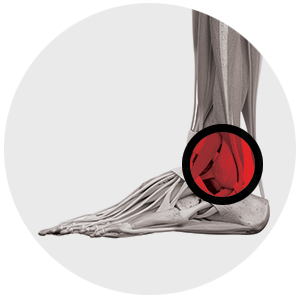Ankle Instability

Ankle Instability
Ankle sprains are one of the most common sporting injuries. Usually your injury will recover with suitable rest and physiotherapy, and this should always been the first line treatment. Ankle instability occurs when your ankle repeatedly gives way during daily activities or sporting activities. This can lead to recurrent ankle sprains, joint pain, swelling, inflammation and can further damage the ligaments and cartilage around the ankle.
Operative Management
When non-operative measures do not work and you are 4-5 months post ankle sprain and still having issues with instability, surgery is indicated. The components of the surgery are to make a cut on the outside of the ankle, release the ligament and then “tighten it up” in an anatomical manner. The tightening involves the use of bone anchors and also the use of a product known as internal brace. At the time of surgery the tendons behind your ankle are inspected and also repaired. At the time of surgery Dr Rao will also perform an arthroscopy of your ankle to look for any evidence of cartilage damage within the actual ankle joint itself. Furthermore Dr Rao will speak to you about a platelet rich plasma injection at the time of surgery. At the conclusion of the procedure you will be placed into a backslab (half a plaster). This is to immobilise the ankle, and protect the reconstruction and the wounds following the surgery.
Post-operative Management
The rehabilitation post-operative physiotherapy is a vital part of your recovery from surgery and return to normal activities. For the first 2 weeks you will be non-weight bearing in the backslab. At the 2 week mark you will have your backslab removed, stitches removed and will then go into a boot. Dr Rao uses the VACOped boot. This boot will be issued to you during your hospital stay. You will then commence physiotherapy from week 3, the aim is to have you mobilising relatively comfortably without any boot or aid by week 8.
With respect to returning to sporting activities, it may take 3-6 months and it may involve wearing a brace. There will be a slight reduction in range of motion of your ankle, however this is usually not a significant problem.
Risks and Complications
No surgery is risk free. These risks and complications will be discussed with you.
Recovery Times
In terms of hospital stay:
- 2-3 nights in hospital (it does depend on how far away from the hospital you live);
- Rest and elevation for 2 weeks;
- Backslab and crutches for 2 weeks;
- At the 2 week mark an appointment with Dr Rao to remove your sutures and go into the boot. You will then commence weight bearing as tolerated in the boot and begin physiotherapy with your local physiotherapist, at least once per week between weeks 3-12;
- To get back to running with a brace around week 10;
- Ankle strapping until week 12;
- Time off work:
- for seated jobs, 4 weeks
- for standing jobs around 8-10 weeks
Meet Dr Rao
Dr Rao is a Newcastle Orthopaedic surgeon who specialises in all aspects of foot and ankle surgery. He graduated from medicine at the University of Sydney and trained as an orthopaedic surgeon in Newcastle and also in Queensland.
He also undertook further training by way of fellowship with world famous Dr Terry Saxby in Brisbane in 2008. He has also conducted further training by attending numerous courses overseas, in Thailand, the USA and right across Australia.

